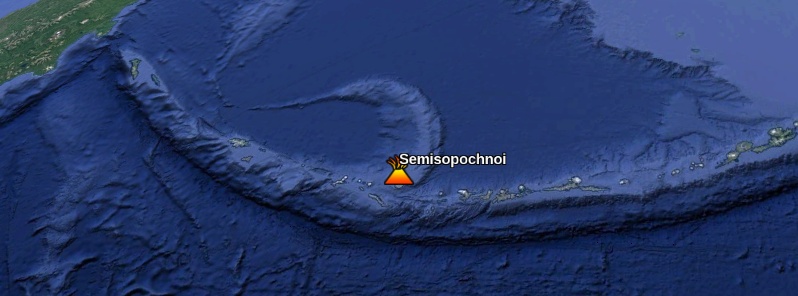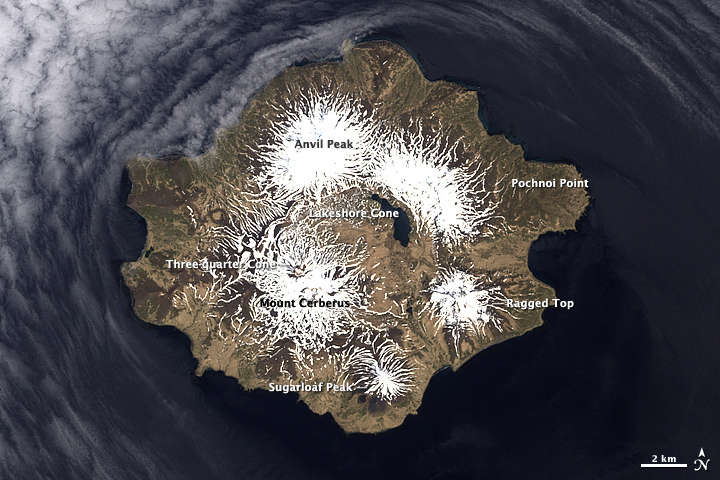Semisopochnoi volcano alert level raised, its previous eruptions were in 1987 and 1873, Alaska

The Alaska Volcano Observatory raised the Aviation Color Code for Semisopochnoi stratovolcano to Yellow and the Volcano Alert Level to Advisory on September 16, 2018. This is the largest subaerial volcano of the western Aleutians. It's 20 km (12.4 miles) wide at sea level and contains an 8 km (5 miles) wide caldera.
An increase in seismicity beginning 16:31 UTC (08:31 AKDT) on September 16 has prompted AVO to raise the Aviation Color Code and Volcano Alert Level to Yellow/Advisory.
There is no clear indication from satellite imagery or regional infrasound data that Semisopochnoi is erupting at this time, AVO said, adding it will continue to monitor Semisopochnoi seismic data and evaluate satellite images.

The last known eruption of this volcano took place in 1987. It had Volcanic Explosivity Index of 2. The previous confirmed eruption was in 1873.
Geological summary
Semisopochnoi, the largest subaerial volcano of the western Aleutians, is 20 km (12.4 miles) wide at sea level and contains an 8-km-wide (5 miles) caldera. It formed as a result of collapse of a low-angle, dominantly basaltic volcano following the eruption of a large volume of dacitic pumice. The high point of the island is 1221-m-high (4 005 feet) Anvil Peak, a double-peaked late-Pleistocene cone that forms much of the island's northern part.
The three-peaked 774-m-high (2 539 feet) Mount Cerberus volcano was constructed during the Holocene within the caldera. Each of the peaks contains a summit crater; lava flows on the northern flank of Cerberus appear younger than those on the southern side.
Other post-caldera volcanoes include the symmetrical 855-m-high (2 903 feet) Sugarloaf Peak SSE of the caldera and Lakeshore Cone, a small cinder cone at the edge of Fenner Lake in the NE part of the caldera.
Most documented historical eruptions have originated from Cerberus, although Coats (1950) considered that both Sugarloaf and Lakeshore Cone within the caldera could have been active during historical time.
This volcano is located within the Aleutian Islands, a UNESCO Biosphere Reserve property.
Featured image credit: Google, TW

Commenting rules and guidelines
We value the thoughts and opinions of our readers and welcome healthy discussions on our website. In order to maintain a respectful and positive community, we ask that all commenters follow these rules:
We reserve the right to remove any comments that violate these rules. By commenting on our website, you agree to abide by these guidelines. Thank you for helping to create a positive and welcoming environment for all.